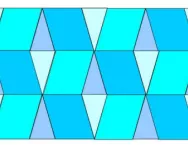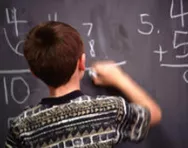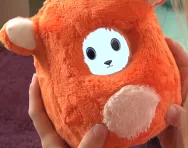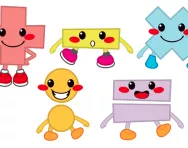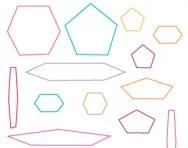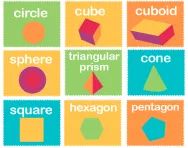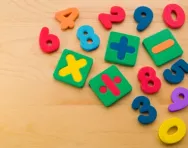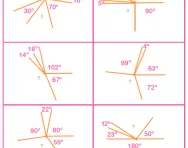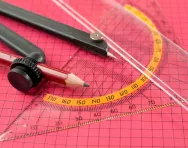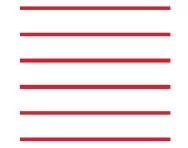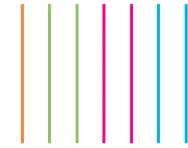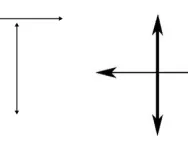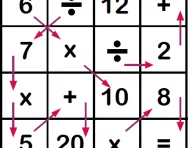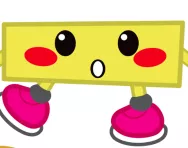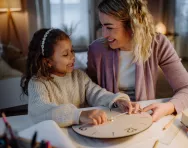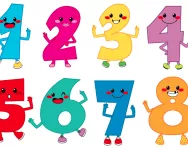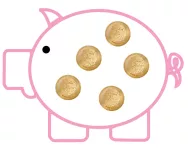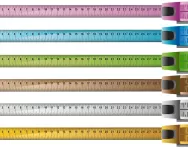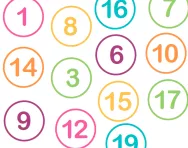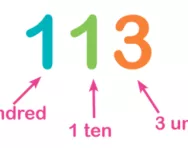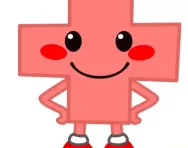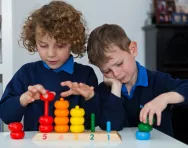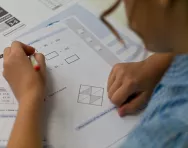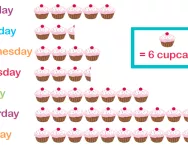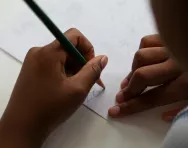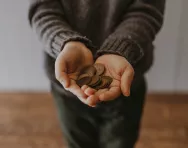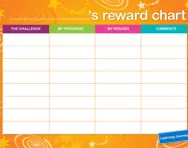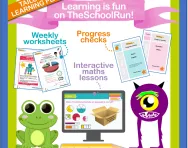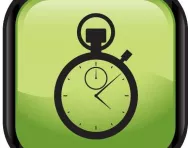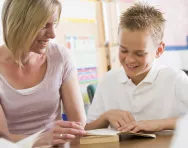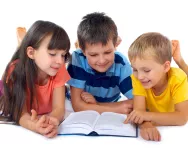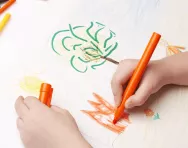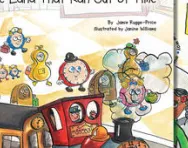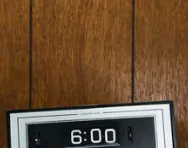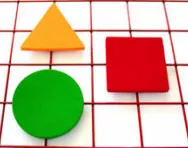What are tessellating shapes?
We explain what tessellating shapes are and why tessellation may be taught in primary school as part of learning about 2D shapes.
What is an estimate?
We explain how children are taught to make estimates to check whether their answers are correct and how this skill is applied to more difficult calculations as your child advances through primary school.
100 of the best educational toys: EYFS
Learning toys that are packed with play value, too, our 100 best educational toy picks will help your child identify numbers and letters, learn their high frequency words, understand rhyming and even get to grips with primary-school programming and physics. Get great gift ideas with our recommendations for nursery and Reception children!
100 of the best educational toys: stocking fillers
Don't forget the stockings! These little toys and games are the perfect size to slip in, yet still offer plenty of educational opportunity. Encourage observation, curiosity, dexterity and creativity with these brilliant gifts, whatever age your child is.
What are the four operations?
We explain what the four operations are and how children learn about addition, subtraction, multiplication and division over KS1 and KS2, working towards solving problems involving all four operations.
What are regular and irregular shapes?
We explain what regular and irregular shapes are and suggest mnemonics to help children remember how many sides different shapes have. We also have examples of the types of questions primary-school children might be asked about shapes.
What are the properties of 2D and 3D shapes?
We explain what the properties of 2D and 3D shapes are, what faces, edges and vertices are and how children will describe 2D and 3D shapes in KS1 and KS2.
What are the names of 2D and 3D shapes?
We explain what the different 2D and 3D shapes are, when primary-school children are taught to name them and sort shapes according to their properties and when they learn to identify and draw their own nets of 3D shapes.
What are odd and even numbers?
We explain what odd and even numbers are and how primary-school children are taught about this concept in KS1 and then have to apply this learning in KS2.
What are degrees?
We explain what degrees are and how children are taught to use protractors to measure angles, as well as reviewing the different knowledge children acquire about angles throughout KS1 and KS2.
What are right, acute, obtuse and reflex angles?
We explain what right, acute, obtuse and reflex angles are and how children are taught about different angles through KS1 and KS2.
What is horizontal?
We explain how primary-school children are taught to recognise horizontal lines in shapes.
What is vertical?
We explain how primary-school children are taught to recognise vertical lines in shapes, and what you can to to support your child's understanding at home.
What is parallel?
We explain what parallel means and how children are taught about shapes throughout KS1 and KS2.
What is perpendicular?
We explain what perpendicular means and how children are taught angles throughout KS1 and KS2.
What is diagonal?
We explain what diagonal means in geometry and why it is important that children understand this term when learning about 2D shapes in primary school.
12 great benefits of maths challenges
Maths activities could give your child’s learning a boost in many ways, and help them engage with numbers (and enjoy it!) from a young age. Lucy Dimbylow offers 12 reasons to give number puzzles a go today.
Teachers' tricks for subtraction
Help your child become subtraction savvy with our teachers' tips on methods, practical resources, vocabulary and more. From subtraction songs and subtraction story problems to column subtraction, Phoebe Doyle offers some practical homework help for 'taking away'.
Best time-teaching products
Great toys, books and resources to help your child learn to tell the time on analogue and digital timepieces, from clock face recognition to estimating time differences on the 24-hour clock.
5 number and counting skills primary-school children need
Numbers are all around us, almost from birth! Teacher Phoebe Doyle looks at counting, a fundamental aspect of mathematical understanding, to help your child grab the basics (without confusion!) from day one.
Teachers' tricks for shape, space and geometry
Throughout primary school children learn about the properties of the shapes in the world around them (primary geometry, in other words). Phoebe Doyle offers some insiders’ tips on helping them master shape and space maths targets.
Teachers' tricks for money maths
Money is the ultimate ‘real-life’ maths resource. Here's how to make the most of this tool to improve your child's maths learning at home.
Teachers' tricks for weights and measures
Weights and measures can be a really fun area of maths to teach in school – but one that can leave parents unsure of how to help at home. Teacher Phoebe Doyle has some hints and suggestions.
What are number bonds?
If your child is in Key Stage 1, chances are they'll have told you they're learning 'number bonds'... but what are they? Teacher Alice Hart explains why children are taught these number pairs, and how you can help your child practise them at home.
What is place value?
A good understanding of place value (the value of each digit in a number) is vital in primary-school maths. Our parents' guide explains how your child will be taught about ones, tens, hundreds and thousands with number lines, arrow cards and more, as well as outlining how place value is used to help children visualise calculations.
Teachers' tricks for addition
Help your child with their addition work, from the basics in Reception to calculations in KS1 and KS2, with some teachers' tricks to help the learning stick.
Does my child have dyscalculia?
What are the signs to look out for if you think your child might have dyscalculia or 'number blindness', and what can be done to help?
7 strategies to help defeat children’s fear of maths
What does it mean if your child has a fear of maths, and what can you do to help them get over it? TheSchoolRun offers a step-by-step plan to help you boost your child's confidence – and your own.
What is a pictogram?
Pictograms are introduced in Year 2 as a simple and engaging introduction to bar charts. We explain what your child needs to know about pictograms and how to read and create them, as well as explaining when and how they're taught.
Your child's new school year preparation plan
Each year group brings fresh challenges in literacy and numeracy. Want to give your child a head start? Primary teacher Phoebe Doyle offers some easy-to-action advice on tackling an objective from the year group your child is about to enter during the summer break.
6 steps to a money-savvy child
We all want our kids to have the very best future, and ensuring they’ve got money sense is crucial to help make it happen. Mum-of-two and financial whizz Emily Richards shares a few down-to-earth strategies to equip your child with money management skills for life.
The Learning Journey reward chart and certificates
Support your child's Learning Journey with these fantastic motivational resources – a colourful reward chart where you can set your own challenges and choose rewards together, and printable certificates to celebrate success.
How the Learning Journey works
Find out how our fantastic primary school learning programme – The Learning Journey – could benefit you and your child as well as full details of how to use the reward charts and certificates!
What is mental maths?
The ability to work sums in your head is an important skill that primary students must develop throughout the key stages. We explain what mental maths means in National Curriculum terms, and how you can help your child become a quick calculations whizz!
Teachers’ top 10 classroom discipline tricks
Does every homework session end in tears and tantrums? Or are you losing sleep over getting your child to learn their spellings? Lucy Dimbylow asked the people who manage 30 children at a time (gulp!) – teachers and teaching assistants – to share their tried and tested tricks.
11 things parents need to know about the National Curriculum
It’s the basis for what your child learns every day, but what exactly is the National Curriculum and what does it teach? Education writer and primary teacher Phoebe Doyle offers some clarity.
What your child learns in Reception
Understand what your child is learning in their first year of school, and find out how you can help them do their best.
Teaching time the 21st century way
Are you struggling to teach your child to tell the time? Elena Dalrymple reviews a new story-based learning method.
Telling the time: how to help your child learn
Learning to tell the time is not an easy process, so to help you help your child we have broken it down into separate learning stages.
Help your child learn about shapes
Learning about shapes and geometry plays a major part in your child's numeracy education across the Key Stages. Here are some tips to help them get a head start.
